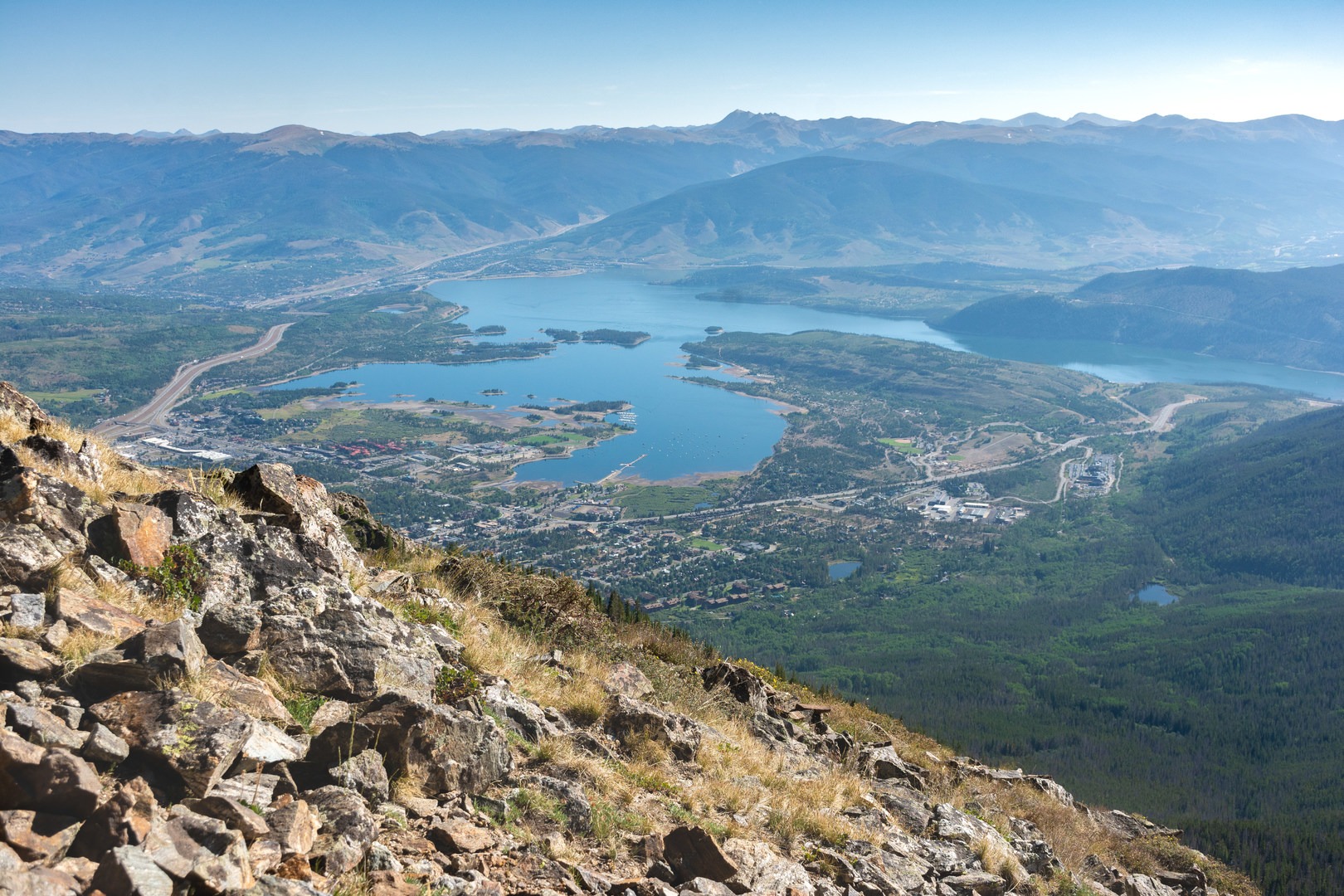You are here
The combination of Mount Victoria and Peak 1 is a fantastic adventure that leads you thousands of feet above the small town of Frisco, Colorado, and gives you a taste of mountaineering and rock climbing with expansive views for hours on end. This semi-technical, full-day hike takes you through old-growth forest, an abandoned mining community, multiple peaks, rocky ledges, and up to 12,800 feet.
You'll need to start early in the day, around 6 or 7 in the morning ideally. Especially in the summer months, thunderstorms are a real threat, and because most of this hike takes place above treeline there is no shelter from the elements. An electrical storm or a snowstorm there can lead to getting lost, serious injury, or death. Pay attention to the weather forecasts and keep an eye on the clouds throughout the day. If the weather isn't looking good, retreat and try another day. The mountain will always be there.
To find the trailhead, park on West Main Street just a few hundred yards east of Interstate 70 (exit 201 off the highway). There is a small public parking lot just to the south of the road, or you can park directly on West Main Street if you're within the time they allow you to leave your car.
From there, you'll get on a wide, paved walking path. Follow the path toward town, roughly in a southeast direction. After about a half-mile, you'll find a clearly marked sign for the Mount Royal trail on your right. Take that, and you'll quickly ascend with the town of Frisco on your left. Shortly after this, the trail will begin a long slog pushing you straight up the mountain. This is going to last for about a half-mile, so be careful to pace yourself and take breaks if you need one. The trail is very wide and sometimes breaks through the trees enough to see the beautiful rollings hills just to the south of town. Once you're through this section, you'll see another clearly posted sign signaling Mount Royal to the right and Mount Victoria to the left. Take the left fork.
Here the trail eases up a bit, although you're still going to be switchbacking through the trees for some time. But soon the trail will put you face to face with your first glimpse of Tenmile Canyon. To the west, the canyon will drop down about a thousand feet, making the cars driving on the highway below hardly visible. From here, the views just get bigger and bigger as you work your way up to the alpine.
Once you're on the spine of the mountain at the canyon, you'll want to turn left (south). The trail here fades in and out at times. Stay on the spine of the mountain, making sure you aren't descending into trees or dropping into the canyon. There have been multiple instances of people being cliffed out—trapped on the canyon walls, unable to move up or down—and needing a special rescue team to assist them back down the mountain.
Keep moving up, and the trees will get thinner and thinner as you go. Eventually you'll come to a small plateau where the tree line breaks completely. Here you'll have full 360-degree views of the heart of the Rocky Mountains. A small weather station with some antennae arrays can also be spotted here. Let that be a guide of sorts. The trail will head toward that station but will keep you at a slight distance away and just below it. Turn a bit more south, and soon you'll find yourself on top of the first peak of the day: Mount Victoria.
This is a great spot to take a lunch. Not only because of the expansive views of Frisco, Dillon, Dillon Reservoir, and Silverthorne, but also because the toughest and steepest parts of the hike still remain. Take a look behind the three towns to see Peak 1 looming like a giant above you. From the pictures, you can see it looks steep. And it is. Not only will you have to navigate steep trails on rocky terrain, but you will also have to get through a fun class 2+ section of scrambling and climbing to earn your way to the top.
From Mount Victoria follow the trail west. Keep your eye not only to the mountain vistas surrounding you, but also to your feet. Exposed rock on the trail could easily trip you up. The walls down to the canyon are extremely steep, and they can't be climbed without technical gear. As you move along, you'll have some options to scramble if you're feeling ambitious or want to practice for the required technical section shortly ahead. While some moves are relatively secure, a fall among some of the other moves can be very risky, with serious exposure and consequences. This could also be a litmus test for further climbing. If some of the sections here are above your skill or comfort level, turn around now because it doesn't get any easier and the danger levels will be a little higher.
Eventually you'll come to the class 2 to class 3 section. This is a small segment of exposed rock that connects the ridge you're currently on the the final push to get up Peak 1. You'll find yourself under a 30-foot section of vertical rock. Here, the trail splits off into multiple routes. Take a few minutes to look around and find which one best suits you, your skill level, and what seems fun. All the routes will have you using all four limbs to get up and onto the ledge.
Take care in each step, and make sure you have solid footing and strong handholds before each move. Once you're on top of the ledge, you'll have to slightly descend before once again moving up to finish the hike. Again, there are a few different routes, but you should be able to see enough to plan your down climb before committing to it.
Finally, take the well-marked, very steep trail to the top of the mountain. Take in the well-earned views of Copper Mountain, Tenmile Peak, Frisco, Dillon, Silverthorne, and the mountains of the Gore Range.
You'll have to re-climb that same technical stretch again on your climb down. There are a few fun, multi-move vertical climbs you can take to get up there, or follow some more mellow routes. Again, make sure to have solid hand and footholds. Once you're down from the technical section, follow the trail back toward Mount Victoria and the weather station. When you're getting below that, hike slowly to make sure you find the trail (on the right) that you took up to get to the ridge of the canyon. It can sometimes be difficult to find, especially with a tired and fatigued mountain mind. Follow that well-marked path down to the paved bike trail, where you'll take a left that will lead you back to your car.
Logistics + Planning
Current Weather: Powered by Dark Sky






























Comments
Sign In and share them.